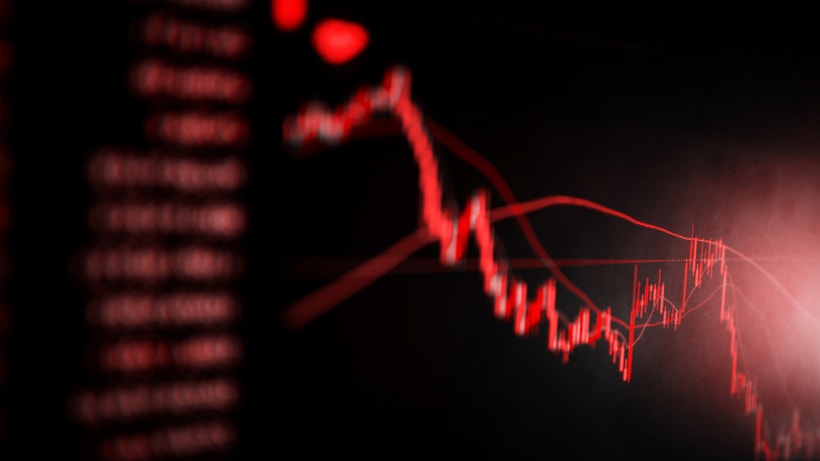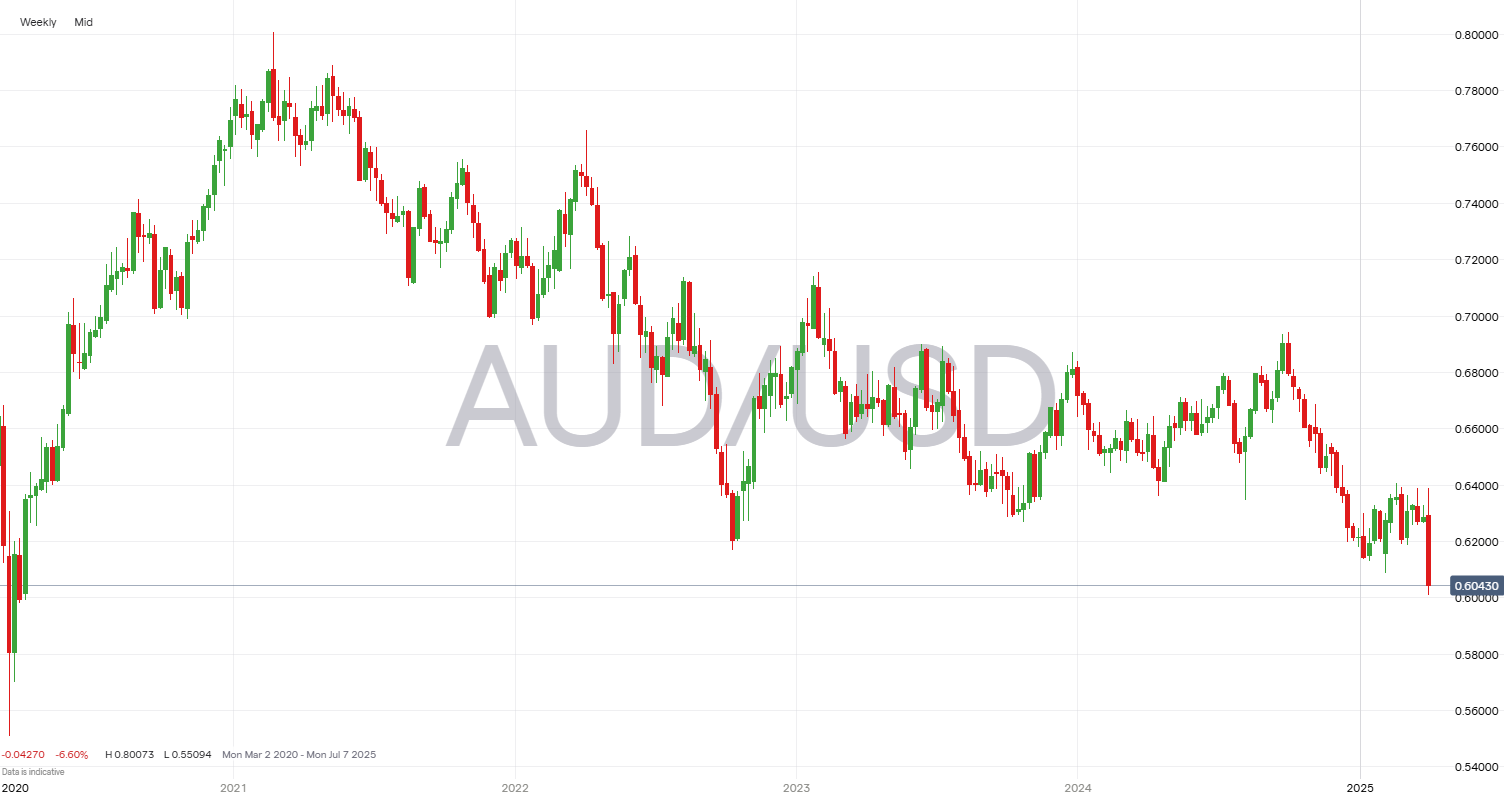AUD/USD crashes after China's aggressive tariff response
Dollar swings wildly as Trump announces global tariffs, then strengthens after China's decisive response. AUD/USD crashes to multi-year lows amid intensifying trade tensions.

Dollar whipsaws in tariff fallout
Wednesday night saw significant volatility as President Trump announced reciprocal tariffs on global trade partners, causing the dollar to falter amidst fears of slower US growth. This uncertainty pushed EUR/USD up to 1.1100 and AUD/USD near 0.6400. However, by Thursday night, China's announcement of 34% retaliatory tariffs shifted momentum dramatically, strengthening the dollar through Friday, with a particularly severe impact on the Australian dollar. For traders, this provided generous trading ranges of more than 100 pips in major pairs with some two-sided action. However, extra precautions should be taken during enhanced volatility environments like this, as demonstrated by the completely one-sided slide overnight in markets like AUD/USD that has yet to offer reprieve.
AUD/USD hits 5-year low under 0.6100
Following China's tariff announcement, AUD/USD plummeted through Thursday night, reaching a 5-year low under 0.6100 by Friday midday. The drop was exacerbated by robust US jobs data and hawkish commentary from Fed Chair Powell, pushing the pair dangerously close to the 0.6000 psychological barrier—levels last seen at the onset of the pandemic. This rapid decline, representing over 5% in just 24 hours, underscores the intense volatility facing the Australian dollar, reflecting both external pressures from global trade tensions and internal economic factors influencing currency performance in commodity-dependent economies.
AUD/USD Weekly Price history

How do tariffs affect the US dollar?
Tariffs create a complex dynamic for the US dollar, influencing it through multiple channels. While tariffs can bolster the dollar by improving trade balances and encouraging foreign currency devaluation against the USD, they also risk economic slowdown by raising consumer prices and disrupting supply chains. Fed Chair Powell specifically noted that sustained inflation from tariffs could necessitate keeping interest rates high, but a subsequent economic downturn might ultimately force rate cuts. The impact of tariffs varies significantly across countries, depending on their relative economic resilience, trade dependencies, and monetary policy flexibility, making the outcome uncertain and multifaceted for currency traders.
Where next for AUD/USD?
The AUD/USD rate is highly sensitive to ongoing tariff negotiations, particularly following recent aggressive moves by China. If the US imposes further tariffs as threatened, the Australian dollar may face additional downward pressure due to its heavy reliance on exports to both China and the US. Conversely, a US economic downturn resulting from trade tensions could trigger Fed rate cuts, potentially seeing AUD/USD revert to historical support levels. Tariffs as negotiation tools also present opportunities for relief rallies if revoked or reduced through diplomatic channels. Meanwhile, the Australian dollar's status as a risk-on currency closely tied to US equity performance suggests further depreciation if market fears persist, with technical support levels now being tested after this dramatic sell-off.
How to trade AUD/USD
- Open an account to get started, or practice on a demo account
- Choose your forex trading platform
- Open, monitor, and close positions on AUD/USD
Trading forex requires an account with a forex provider like tastyfx. Many traders also watch major forex pairs like EUR/USD and USD/JPY for potential opportunities based on economic events such as inflation releases or interest rate decisions. Economic events can produce more volatility for forex pairs, which can mean greater potential profits and losses as risks can increase at these times.
You can help develop your forex trading strategies using resources like tastyfx’s YouTube channel. Our curated playlists can help you stay up to date on current markets and understanding key terms. Once your strategy is developed, you can follow the above steps to opening an account and getting started trading forex.
Your profit or loss is calculated according to your full position size. Leverage will magnify both your profits and losses. It’s important to manage your risks carefully as losses can exceed your deposit. Ensure you understand the risks and benefits associated with trading leveraged products before you start trading with them. Trade using money you’re comfortable losing.
